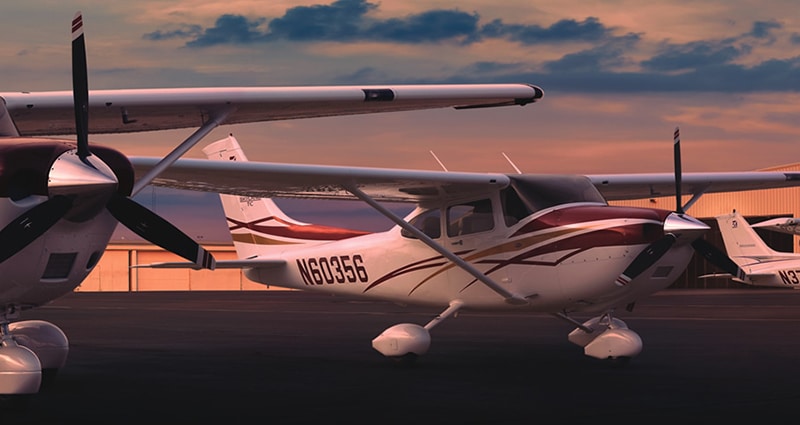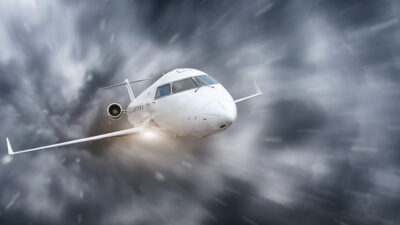From Where I Sit…

When Global Aerospace told me that they hoped students would participate in SM4 and use its resources, I listened closely. Students spend time in my ballpark; I’m the Director of Aviation Safety at the University of North Dakota. We operate over 120 aircraft, average about seven hundred students under instruction at any given time, train in challenging weather conditions, and we do it all with an absolute commitment to safety.
Choosing a flight school or educational institution that provides flight training can be difficult. Students must consider location, cost, availability of financial assistance and the institution’s reputation. These are important factors when preparing for a career in aviation, but how many students evaluate a training provider’s approach to safety. From where I sit, it should be the student’s primary concern.
Most new students assume Safety is inherent in all aviation programs. They don’t have a tremendous amount of experience, and often they don’t even know what questions to ask. Maybe it is time for those of us who have been around for a while to give the newbies some assistance. Here are a few items I would add to their selection checklist:
- Does the school operate from the perspective of Managed Safety?
- Do they have a documented Safety Management System (SMS)?
- Do they search out and obtain outside safety audits of their operations? How often?
- How do students participate in the safety program and audits?
Are the school’s aircraft equipped with the latest “glass cockpit” technology? This equipment simplifies aircraft operation and navigation and allows pilots to focus on the most pertinent aspects of aviation. Teaching the basic building blocks of airmanship in a glass cockpit aircraft is more effective because students learn faster and their situational awareness improves. As a side benefit, if a school operates aircraft with 21st century avionics, it is probable that the fleet is modern and well-maintained.
Speaking of modern – Are aircraft equipped with Automatic Dependent Surveillance Broadcast (ADS-B)? This is another situational awareness advantage for both the student and the instructor. A recent FAA study in Alaska revealed ADS-B reduced accidents by 40 percent by allowing pilots to “see” other aircraft as well as terrain features – and that reduces the possibility of midair collisions and Controlled Flight into Terrain (CFIT).
Are the training aircraft equipped with additional exterior lighting options? These options include recognition lights, taxi lights, strobe lights and light pulsating systems that increase aircraft visibility during night flights or during reduced visibility weather conditions. Additional aircraft lights reduce the risk of runway incursion and taxi accidents. There is even research indicating that pulsing aircraft lights can provide increased reaction times for avian wildlife resulting in a potential decrease in bird strikes.
Do the training aircraft have overhead windows? Outside visibility from inside the aircraft can be increased by the additional overhead windows sometimes referred to as skylights. This increased crew visibility is important for collision avoidance when taking off, climbing, or during steep turns.
How about air bags? Some small GA aircraft are now equipped with this technology built into the seat restraint systems. Accident investigations have already determined that aircraft airbags can save lives and reduce the potential for serious injuries. You probably won’t yet find many training aircraft with this safety feature, but it’s a good question.
Learning to fly can be a fun and rewarding experience. The likelihood of being involved in a flight training accident is extremely low. But accidents happen. Determining the training provider’s approach to safety management and their approach to safety technology should be a top priority on your evaluation checklist. From where I sit, this one of those times when cheaper may not necessarily be better.

He holds an Airline Transport Pilot Certificate, Flight Instructor Certificates and is a Designated Pilot Examiner for the FAA. The University of North Dakota conducts more than 100,000 flight training hours per year in its fleet of 122 aircraft based in Grand Forks, ND., Crookston, Minn., Phoenix, Ariz., and Spokane, Wash.
http://aero.und.edu/
© 2024 University of North Dakota. All Rights Reserved.
Next ArticleRelated Posts

Understanding the Challenge of Turbulence-Related Injuries in Business Aviation
The challenge of managing air turbulence in business and private aviation is becoming increasingly evident due to the growing number of turbulence-related incidents affecting aircraft operators across the industry.

Leadership, Management and Safety: Embracing Compliance and Conformance Oversight
Aviation operations, and by default, safety, are based on the idea that regulatory requirements are fundamental to establishing a framework to achieve safe operations.

